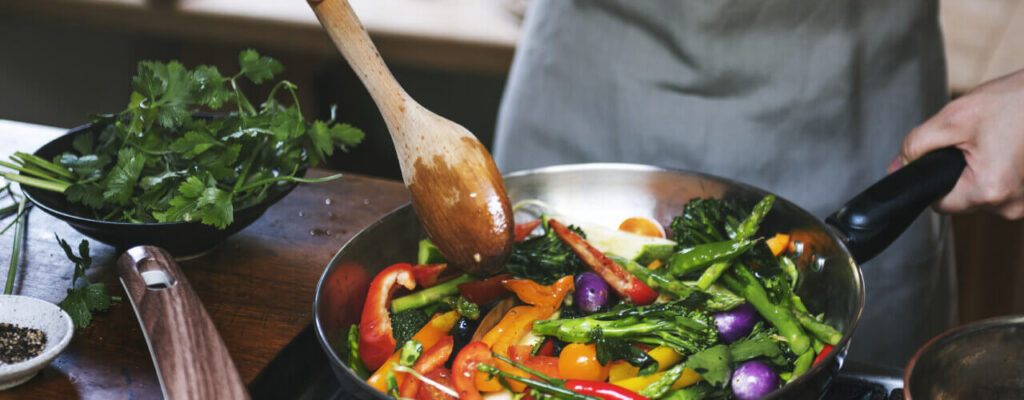Changes To Your Diet Can Relieve Pain and Inflammation

Find the Benefits of an Anti-Inflammatory Diet by Consulting with a PT!
Getting healthy doesn’t have to be a chore! You’ll be delighted to learn that simply by modifying your diet, you can get chronic pain and inflammation under better control (or possibly even avoid those symptoms entirely). Better yet, the diet you choose doesn’t have to taste like a punishment for previous bad exercising habits.
Our physical therapist typically recommends dietary changes alongside exercises and other natural techniques as part of a holistic physical therapy program. Try replacing some of your old, regrettable menu items with this pain-reducing, anti-inflammatory diet, and in the meantime, call our clinic to set up an appointment with one of our skilled physical therapists.
Be spice smart.
And though these foods are delicious, you’ll probably want to spice them up a bit. Thankfully, Mother Nature has created a plethora of herbs and spices that will assist in the reduction of pain and inflammation.
If you like Indian cuisine, for example, you’ll appreciate the fact that turmeric contains curcumin, a potent anti-inflammatory. Diallyl disulfide, another natural anti-inflammatory, is heavily abundant in garlic! Capsaicin, a natural pain killer, is in cayenne pepper. Don’t forget about adding in oregano, which is high in antioxidants!
Don’t ditch the sweets, just change them!
Refined sugar is well-known for causing and exacerbating inflammatory conditions and symptoms. In reality, only one sugary soda a day has been found to cause a 68 percent rise in rheumatoid arthritis symptoms in women.
The good thing is that you can eat a sweet diet without adding sugar to your diet. For a soothing change that won’t set off the pain receptors, serve fresh or frozen fruit at the end of a meal. If you would use a packaged sweetener, stevia, a natural sweetener, is potentially the next best alternative.
Yogurt and fermented foods are great for your gut
There’s a constant battle going on in your gut between “bad” bacteria (which promote inflammation, chronic pain and digestive discomfort) and “good” bacteria (which support digestive health by crowding out the “bad” bacteria).
You can give the good guys an edge by adding plenty of probiotic foods to your diet. Options include low-fat yogurt and fermented products such as kimchi, sauerkraut, miso, and pickles.
Bring out the fruits and veggies!
Make fruits and vegetables a cornerstone of your diet, and you’ll be well on your way to feeling better!
Fruits and vegetables come in an eye-popping array of colors, from deep purple and brilliant green to neon orange and brilliant yellow. But these colors aren’t just for show; they’re a sign that you really need to be eating more of these foods.
The amazing colors are provided by antioxidants, nutrients that possess powerful anti-inflammatory powers. Broccoli and cabbage are loaded with Vitamin K, a notable inflammation fighter.
Choose lean over red meats
It’s all too easy to settle for hamburgers, fried chicken, deli meats and other convenient protein sources — but they don’t seem so convenient once the pain and inflammation set in.
You can easily correct this problem by switching to healthier proteins that include all the nutritional value without the inflammatory properties. Try gracing your table with fish (especially fatty fish such as tuna or salmon, which are high in anti-inflammatory omega-3s), tofu dishes and legumes.
Talk to a physical therapist
Although altering your diet is a decent place to start, it might not be enough to alleviate chronic inflammation and pain. Physical therapy can be able to help you alleviate or even eliminate the pain you’re experiencing.
There are several methods a physical therapist may use. A few techniques could include manual therapies, dry needling, or even ultrasound treatments. More basic methods might include using heat or ice therapy. A physical therapist may even give you stretching and motion exercises you can do at home.
Looking for more advice? We can help!
Our physical therapist can help you construct an entire lifestyle plan that incorporates diet, exercises, healthy ergonomics, and other strategies for helping you feel great.
As you start to feel the pain-relieving, anti-inflammatory benefits of your new dietary habits, you can gain even more benefits from physical therapy and other pain management options. Contact us today to schedule an appointment!
Sources:
- https://www.healthline.com/health/anti-inflammation-foods-less-pain-arthritis#3
- https://agilepts.com/ways-nutrition-can-decrease-pain-and-inflammation/
- https://www.health.harvard.edu/staying-healthy/foods-that-fight-inflammation
- https://www.practicalpainmanagement.com/patient/treatments/alternative/9-ways-reduce-inflammation-pain-through-diet?page=2#top
- http://www.apta.org/blogs/PTTransforms/2016/11/16/nutrition/
- http://www.apta.org/PatientCare/Nutrition/
- https://health.clevelandclinic.org/5-best-and-worst-sweeteners-your-dietitians-picks/
- https://www.webmd.com/diet/anti-inflammatory-diet-road-to-good-health#1
- https://www.healthline.com/nutrition/11-super-healthy-probiotic-foods
- https://www.arthritis.org/living-with-arthritis/arthritis-diet/best-foods-for-arthritis/best-spices-for-arthritis.php
- https://www.healthline.com/nutrition/6-oregano-benefits#section1
